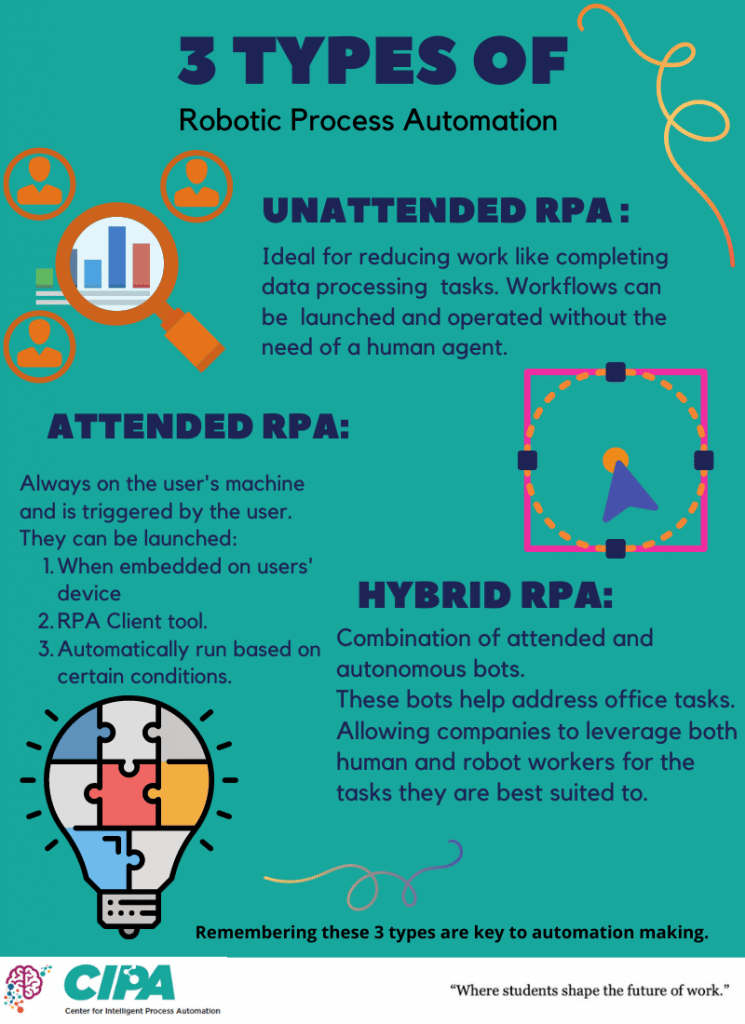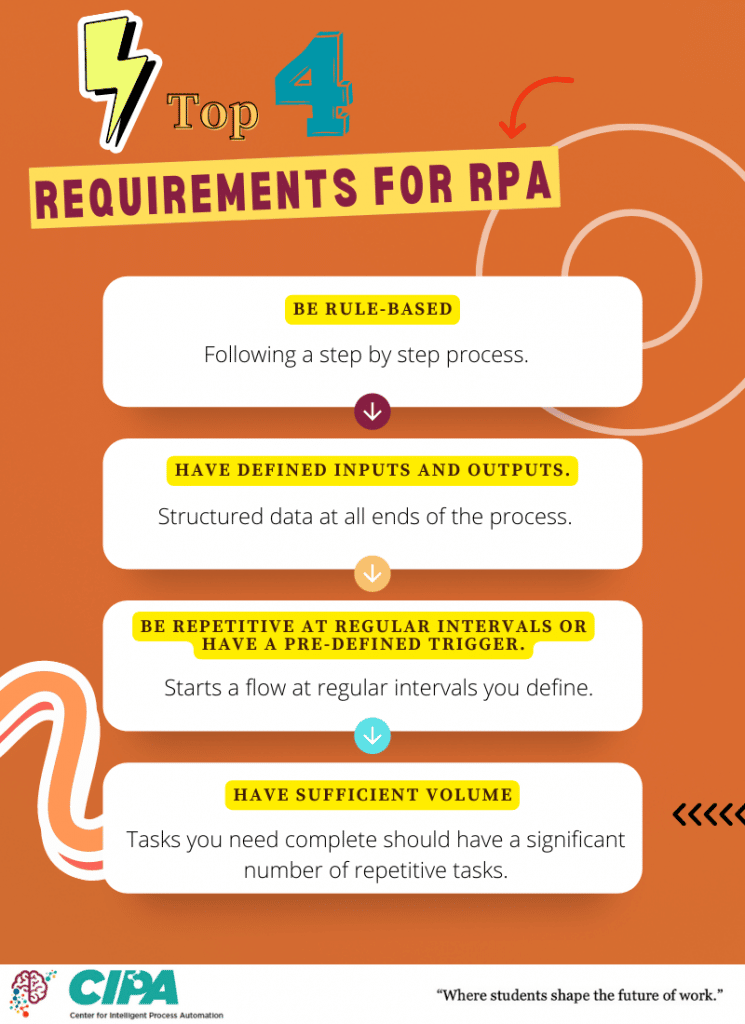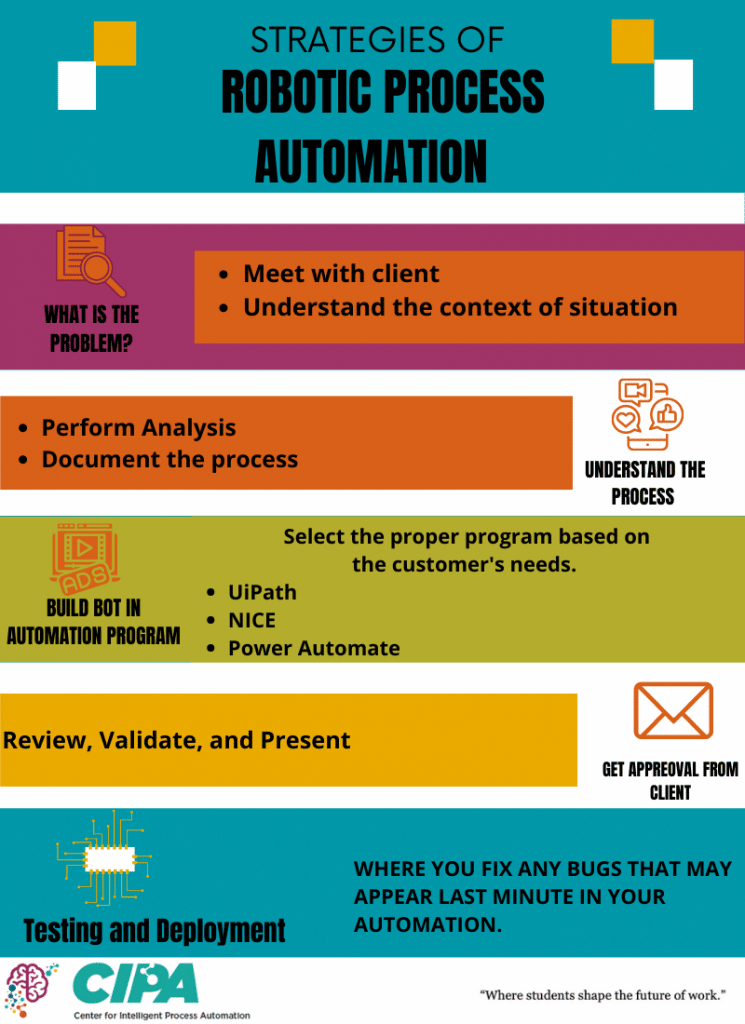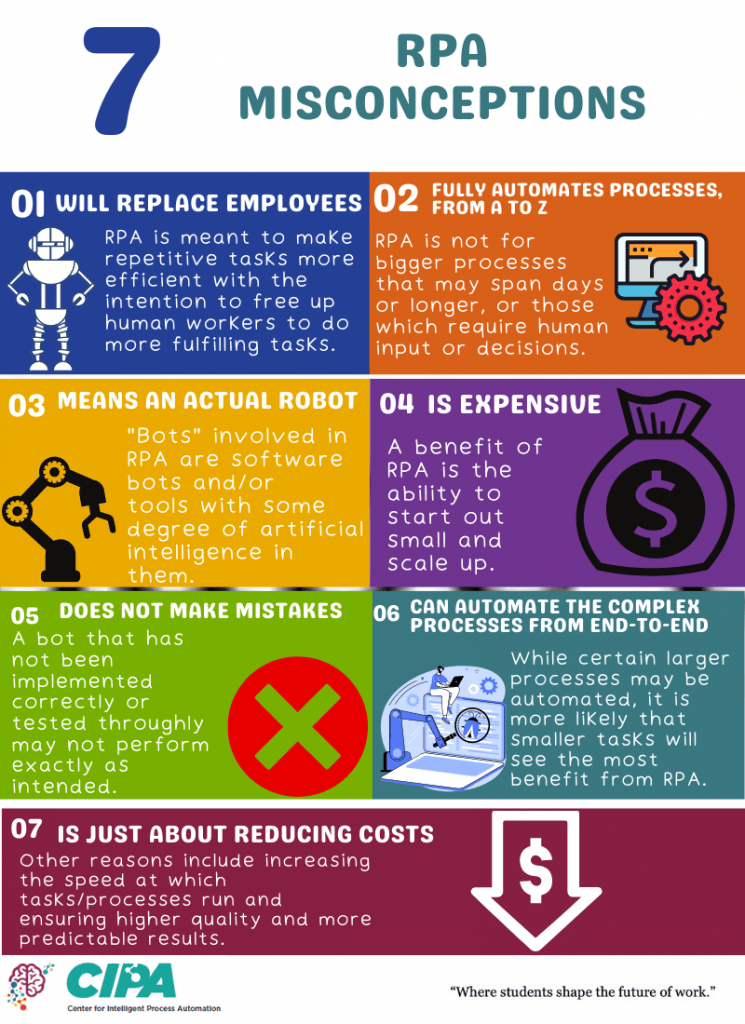Robotic Process Automation Infographics
These are student generated Infographics by Melissa Owusu and Kendra Annis. The infographics will give you a brief dive into what RPA really is. There are many assumptions made when hearing conversations about Automation in the workplace. We have designed these infographics to not only clear up some of the confusion on these common misconceptions but also to educate everyone further on what RPA really is.

The infographic that IPAA Melissa Owusu explains the 3 types of Robotic Process Automation. The three types are unattended, attended, and hybrid RPA. Unattended RPA is ideal for reducing work revolving around data processing tasks. With this kind of RPA, a human does not have to be present, the automation can be launched and operated by itself. On the other hand, attended RPA is always on the user’s machine but must be triggered by a human agent to be launched. Lastly hybrid RPA is a combination of both attended and autonomous bots. Hybrid automation can help address office tasks. Which would allow companies to leverage both human and robot workers for the tasks they are best suited to. Remembering these three types of Robotic Process Automation is key to creating automations.




